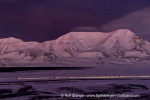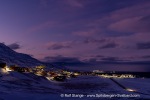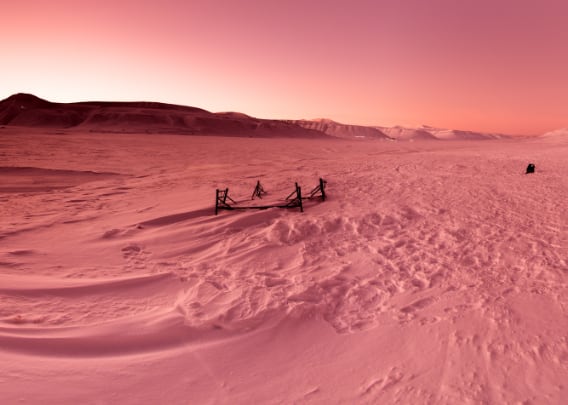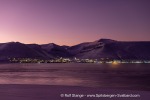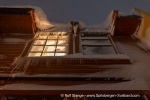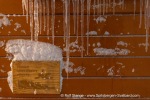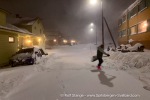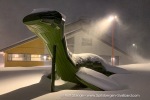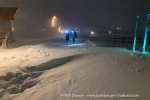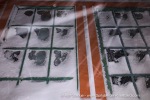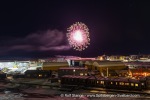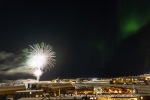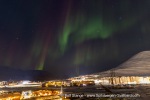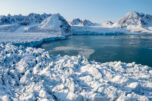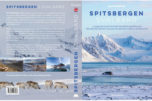-
current
recommendations- Liefdefjord
New page dedicated to one of Spitsbergen's most beautiful fjords. Background information and many photos.
- New Spitsbergen guidebook
The new edition of my Spitsbergen guidebook is out and available now!
- Liefdefjord
New page dedicated to one of Spitsbergen's most beautiful fjords. Background information and many photos.
Page Structure
-
Spitsbergen-News
- Select Month
- June 2025
- May 2025
- April 2025
- March 2025
- February 2025
- January 2025
- December 2024
- November 2024
- October 2024
- September 2024
- August 2024
- July 2024
- June 2024
- May 2024
- April 2024
- March 2024
- February 2024
- January 2024
- December 2023
- November 2023
- October 2023
- September 2023
- August 2023
- July 2023
- June 2023
- May 2023
- April 2023
- March 2023
- February 2023
- January 2023
- December 2022
- November 2022
- October 2022
- September 2022
- August 2022
- July 2022
- June 2022
- May 2022
- April 2022
- March 2022
- February 2022
- January 2022
- December 2021
- November 2021
- October 2021
- September 2021
- August 2021
- July 2021
- June 2021
- May 2021
- April 2021
- March 2021
- February 2021
- January 2021
- December 2020
- November 2020
- October 2020
- September 2020
- August 2020
- July 2020
- June 2020
- May 2020
- April 2020
- March 2020
- February 2020
- January 2020
- December 2019
- November 2019
- October 2019
- September 2019
- August 2019
- July 2019
- June 2019
- May 2019
- April 2019
- March 2019
- February 2019
- January 2019
- December 2018
- November 2018
- October 2018
- September 2018
- August 2018
- July 2018
- June 2018
- May 2018
- April 2018
- March 2018
- February 2018
- January 2018
- December 2017
- November 2017
- October 2017
- September 2017
- August 2017
- July 2017
- June 2017
- May 2017
- April 2017
- March 2017
- February 2017
- January 2017
- December 2016
- November 2016
- October 2016
- September 2016
- August 2016
- July 2016
- June 2016
- May 2016
- April 2016
- March 2016
- February 2016
- January 2016
- December 2015
- November 2015
- October 2015
- September 2015
- August 2015
- July 2015
- June 2015
- May 2015
- April 2015
- March 2015
- February 2015
- January 2015
- December 2014
- November 2014
- October 2014
- September 2014
- August 2014
- July 2014
- June 2014
- May 2014
- April 2014
- March 2014
- February 2014
- January 2014
- December 2013
- November 2013
- October 2013
- September 2013
- August 2013
- July 2013
- June 2013
- May 2013
- April 2013
- March 2013
- February 2013
- January 2013
- December 2012
- November 2012
- October 2012
- September 2012
- August 2012
- July 2012
- June 2012
- May 2012
- April 2012
- March 2012
- February 2012
- January 2012
- December 2011
- November 2011
- October 2011
- September 2011
- August 2011
- May 2011
- April 2011
- March 2011
- February 2011
- January 2011
- December 2010
- November 2010
- September 2010
- August 2010
- July 2010
- June 2010
- May 2010
- April 2010
- March 2010
- February 2010
- November 2009
- October 2009
- August 2009
- July 2009
- June 2009
- May 2009
- April 2009
- March 2009
- February 2009
- January 2009
- December 2008
- November 2008
- October 2008
- August 2008
- July 2008
- June 2008
- May 2008
- April 2008
- March 2008
- February 2008
- April 2000
- Select Month
-
weather information
-
Newsletter

| Guidebook: Spitsbergen-Svalbard |
Home
→ January, 2025
Monthly Archives: January 2025 − News & Stories
The polar night
… is over. At least if you define the end of the polar night as the day on which ‘civil twilight’ returns at noon, i.e. the sun is 6 degrees or more below the horizon. This was the case yesterday (30 January) at just after 12 noon for the first time since 11 November.
Twilight: civil, nautical, astronomical
When the sun is lower than -6 degrees around the clock (i.e. 6 degrees below the horizon), this is called polar night. Before and after this, there are several weeks when the sun does not rise, but is very low below the horizon at midday (between 0 and 6 degrees), so that there is a clear twilight. This is known as ‘civil twilight’, which people experience as dawn. There is also nautical twilight (the sun is 6-12 degrees below the horizon, which can still be seen by navigators at sea) and astronomical twilight (the sun is 12-18 degrees below the horizon, which can still be seen by astronomers with a trained eye), and only when the sun is lower than 18 degrees below the horizon do we officially speak of darkness.
In Longyearbyen, it does never happen that the sun is lower than 18 degrees below the horizon for 24 hours. Even at the darkest time, around 21 December, the sun is still between 11 and 12 degrees below the horizon at midday, so that when the sky is clear there is a hint of twilight to the south. Strictly speaking, it is never completely dark for 24 hours in Longyearbyen.

The end of the polar night: view of Hiorthfjellet on 30 January, spiced up with a dose of red light (Rayleigh-scattering).
You can read more about this on the corresponding page midnight sun and polar night.
Pictures: the end of the polar night
A few impressions from yesterday (30 January) at noon, although I had already missed the brightest point. There was indeed a good whiff of that wonderful red light in the air again, although it wasn’t as intense as it was a week ago.
- gallery anchor link: #gallery_3492
Click on thumbnail to open an enlarged version of the specific photo.
Red light
I need to come back to the stunning phenomenon of the red light again. Firstly, in last week’s post (‘Red sky’) I somehow forgot to mention the name of the phenomenon that is ultimately responsible for this red light. It is called Rayleigh scattering. That should be added.
And I also captured the red light in a complete 360 degree panorama last week, it just had to be processed first. Here is an example from Adventdalen, at ‘Jernsenga’ (‘the iron bed’, there is indeed a bedstead standing in the landscape. But that is another story, for another day). There is another red light pano on the Innerhytta page, taken on a pingo a little further into Adventdalen.
- pano anchor link: #250123b_Jernsenga_55
Ships as an economic factor in Longyearbyen
In Longyearbyen, as in many other places, not everyone is happy to see cruise ships in the harbour. The cruise industry, especially with its larger ships, is not always welcomed in Longyearbyen.
And the locals have certainly been annoyed by the queues at the post office, the supermarket or the overcrowded café, and drivers regularly react with incomprehension to tourists who mistake the road between the harbour and the town centre for a footpath. It’s all there for all to see on the days in question.
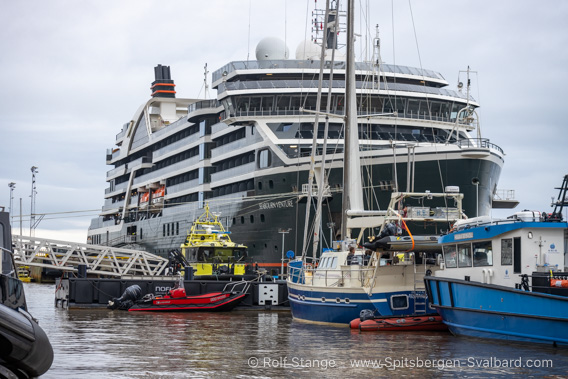
Ships of all sizes come to Longyearbyen. They all leave money there.
What is invisible, however, is what the ships bring to Longyearbyen: economic power in the form of a lot of money. Of course, those who don’t get a seat in the café or slalom down the street at walking pace are not necessarily the ones whose bank accounts fill up. But the amounts are considerable, and a significant part of it is distributed widely through the wages of numerous service providers and sales in shops.
Now we have some figures for 2024:
- The somewhat smaller ships (‘expedition ships’) left 235 million kroner (around 20 million euros) in Longyearbyen.
- The corresponding figure for the larger cruise ships is 112.5 million kroner (around 9.6 million euros).
- Passengers on smaller ships are also ahead when it comes to personal spending: on average, expedition ship passengers spent 8090 kroner (around 690 euros) per person, while cruise ship passengers spent 1886 kroner (160 euros).
- Ny-Ålesund benefited from 21,000 visitors who came as tourists on ships with 14 million kroner (approx. 1.2 million euros).
These figures are considerable, especially as these are very small towns: In purely mathematical terms, ship tourists leave behind around 12,000 euros for each of Longyearbyen’s 2500 inhabitants. This includes fees for the harbour, which the municipality owns but cannot freely dispose of for legal reasons, but also hotels, retailers, restaurants and local tour operators.
It would be interesting to know exactly what these sums are spent on and where the money goes. However, this is not clear from the information available. It comes from a report by the Danish consultancy Epinion for the industry association Visit Svalbard. They found the figures so high that they asked Epinion to check for errors before they took it further. However, the report turned out to be correct and some of the key figures have now been published in Svalbardposten.
Red sky
Thursday (23 January) was one of those rare purple days. It really is rare. When this light comes, it seems to happen preferably during the polar night, as it is coming near the end, as was the case on 10 January 2018, when there was an article about it in Svalbardposten.
It probably happens less than once a year that the sky turns red in such a magnificent way. Yesterday was one of those days when you can count yourself lucky if you’re in the right place. And even more so if you’re able to spontaneously drop the hammer and head out into Adventdalen with your camera, away from the artificial light.
A few impressions:
- gallery anchor link: #gallery_3489
Click on thumbnail to open an enlarged version of the specific photo.
The colour of the photos really corresponds to the impression you got on the spot.
The physics of the red sky
In the Svalbardposten article linked above, Dag A. Lorentzen, then as now professor of geophysics at UNIS, explains the phenomenon by the refraction of sunlight in high atmospheric layers, at an altitude of about 20 kilometres. However, the meteorological conditions must be just right: These include a very cold atmosphere in these layers of air and the formation of special clouds that refract the light in exactly the way that produces this colouring. These ‘clouds’ themselves are not visible; they are weak concentrations of ice crystals rather than what is commonly thought of as clouds. In this case, the parts of the spectrum from violet to green are mostly lost due to refraction and scattering, leaving the remaining wavelengths (mainly red) to dominate.
The actual circumstances must be so exact that the phenomenon of the ‘red sky’ is so rare. In my opinion, the colour impression is more violet, but as the violet part of the spectrum of visible sunlight is the first to be lost, the term red is probably more appropriate from a physical point of view.
Purple haze
The appropriate soundtrack is of course ‘Purple Haze’ by Jimi Hendrix 🙂.
Fresh vegetables …
… are currently a bit difficult in Longyearbyen. This has happened before, after all, it is still at the end of the world or at least not far off. But things are getting thinner now and will probably stay that way for a while. This is what some of the shelves in the fresh produce section of the Svalbardbutikken supermarket look like these days:

Empty shelves in Svalbardbutikken.
The regular cargo plane stopped operating at the end of last year. A replacement is planned, but not yet in sight.
Cargo ships come regularly to Longyearbyen, the passage from Tromsø takes 3-4 days. However, the logistics are obviously not yet perfect, and depending on the weather, it is not unheard of that a cargo of eggs arrives in the shape of of scrambled eggs mixed with cardboard and eggshells.
At the moment, Svalbardbutikken has no choice but to ask its customers to be patient.
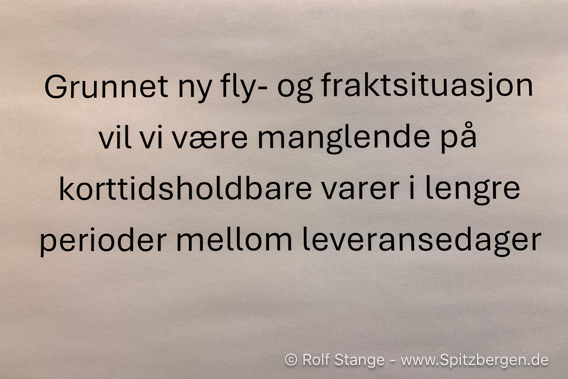
Notice on an empty shelf: ‘Due to the new flight and freight situation, there will be a shortage of perishable goods between deliveries for some time.
Until the airport opened in 1975, Longyearbyen was cut off from supplies for months in winter. After the war and until 1975, there was a mail plane that occasionally made deliveries by ‘mail drop’ (literally). There were probably no bananas or eggs in it either, and the contents of many a tin of apricots had to be scraped out of the snow later, frozen 🙂. At that time there was a ‘jernku’, an ‘iron cow’, in which milk was made from powdered milk. The term ‘jernku’ is often used in Longyearbyen these days, with a slightly sarcastic undertone. There was indeed a real cow, and sometimes several ones, but the milk it produced was reserved for pregnant women and families with small children.

Cows in Longyearbyen (1937). Photo: Odd Danielsen.
For now, we have to make do with what we have. The cargo ship is due to arrive on Monday.
New pages
By the way, if you have the time and inclination to let your mind wander a little more towards Spitsbergen, you can do so on the new pages that are being created during the long evenings of the polar night. After years of exploring remote corners of the island also regarding new pages within this website, I’m now concentrating more on the beautiful places we’ll be visiting in the future. There are still many unknown corners to be discovered, but I’m going to take a more or less systematic approach, starting with a few well-known spots. Trygghamna with Alkhornet and Ymerbukta together with the neighbouring beautiful Erdmannflya will certainly be remembered fondly by some.
I mentioned Sassenfjord and Tempelfjord in this context back in December. The gap between them will also be closed in the future.
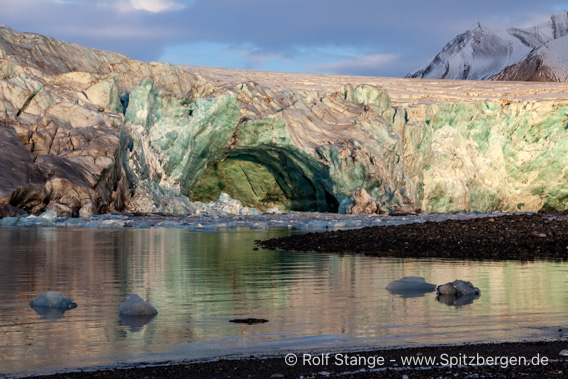
Esmarkbreen in Ymerbukta: still one of my favourite glacier photos,
in beautiful light at the end of September. One of many photos on the new Trygghamna, Alkhornet and Ymerbukta & Erdmannflya pages.
Have a nice weekend!
Snow
It can happen that quickly. It looked like this the other day:

Northern lights over Longyearbyen.
And today like this. It can happen that quickly.
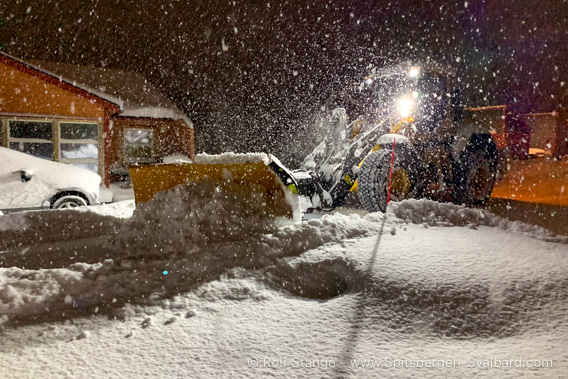
Snowstorm in Longyearbyen.
Wind and lots of snow, that’s a combination that brings some excitement. These amounts of snow are unusual for Longyearbyen, where the overall climate is still arctic and thus rather low in precipitation, and bring challenges with them: air traffic is impaired and individual buildings and sections of terrain have already been evacuated or closed by the Sysselmester due to the risk of avalanches. So far, this affects little used buildings and snowmobile trails near slopes in Longyearbyen, but on a day like this it’s better to leave the horses in the stable anyway.
The slopes at Sukkertoppen near the central residential areas have been equipped with extensive avalanche barriers since the deadly avalanche in 2015, otherwise the residential areas in this area might also have already been affected by evacuations.
- gallery anchor link: #gallery_3480
Click on thumbnail to open an enlarged version of the specific photo.
New rules: the details
There may be more attractive things to talk about than going into the small print of a comprehensive new set of rules, but the much-discussed new rules will from now on determine where we can and cannot go in Svalbard, and much more besides. So they are important. And above all, it is clear that there is a lot of uncertainty and a need for clarification. There are now rumours and misinformation circulating, which I would like to counter.
So there’s only one thing to do: you have to get into the details to see what it is all about. This is not only important for guides who need to know the facts, but also if you are wondering whether a trip to Spitsbergen will still be worthwhile in the future (the short answer: yes).
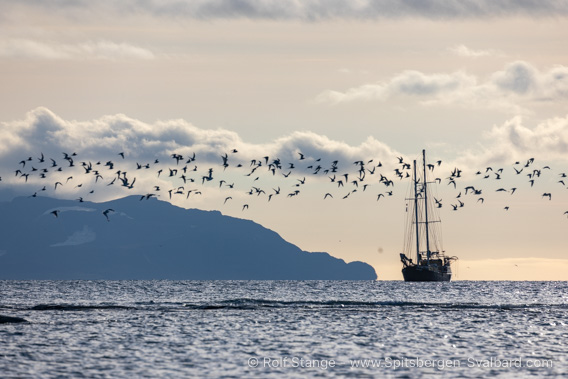
Spitsbergen under sail: still possible, still beautiful. In future, especially in key regions where we will continue to have freedom of movement as usual.
However, I won’t be doing this as part of a post that will be pushed down more and more by newer posts over time, but on a separate page within the ‘Spitsbergen information’ section, which will remain where it is. Click here to open this new page.
Rumours and nonsense
The following is not true:
- ‘You are only allowed to go ashore in 43 places on boat trips in Svalbare.’ That’s rubbish, we still have plenty of space for landings and hikes. Refer to the new page for further details.
- ‘Many bird colonies are now closed and may no longer be visited.’ That’s rubbish, but there are speed limits in many places. Details … You can guess where they are.
- ‘You can no longer see polar bears in Spitsbergen.’ Yes, you can, but distances apply (500 metres until the end of June, 300 metres from the beginning of July). Close-ups are no longer possible in Svalbard, but with binoculars and a good telephoto lens, you can still have a great experience and take some great photos. And this law does not apply at the drift ice outside the twelve-mile zone.
- ‘You are no longer allowed to visit walrus colonies.’ Yes, you can. The minimum distances that are now prescribed for walruses apply to boats. As soon as you are on land, you can visit walrus colonies as usual.
- ‘Svalbard is no longer an interesting travel destination.’ This is wrong, Svalbard is and remains a beautiful, interesting destination with many possibilities. We still have plenty of space for shore excursions and hikes and we will still be able to see lots of wildlife, including walruses, polar bears (the latter at the distances mentioned above) and bird colonies.
New pages: Midterhukhamna and more
During the polar night and in the relative calm of the beginning of the new year, you can relax and create beautiful new pages, also to take your mind off the sometimes somewhat routine work on the updated editions of the Svalbard guidebook. This reference to these beautiful new pages is intended as an easily digestible introduction to the Svalbard news section 2025.
Panorama landscape Bellsund
Bellsund has so far been somewhat sparsely represented in the Svalbard panorama section, which of course does not do justice to this varied and beautiful area, and there is certainly more than enough material for corresponding pages in the archive, they just have to be created bit by bit. Midterhukhamna and Gåsberget (Midterhuken) are a nice step forward with two brandnew pages. Enjoy the virtual trip there, the view over Bellsund is fantastic and the whole area really is a natural gem.
- Midterhukhamna: coastal landscape in Bellsund.
- Gåsberget at Midterhuken: panoramic view over Bellsund.
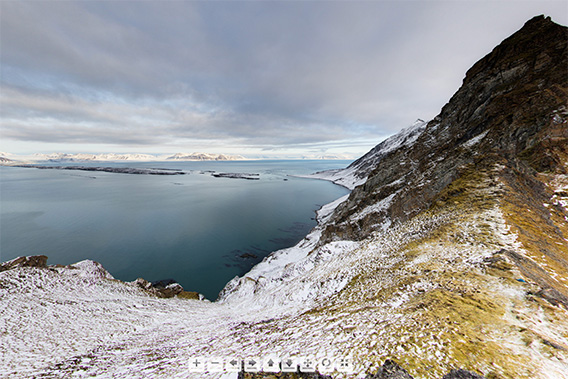
View from Midterhuken in Bellsund: a mouse click worthwhile. The picture here is just a screenshot, the real panoramas can be rotated 360 degrees on the screen.
If you fancy more of Bellsund, you should for example visit Observatoriefjellet and Snatcherpynten in Recherchefjord, or Akseløya including Russeltvedtodden. There is plenty of good stuff.
Happy New Year! New Year’s Eve in Longyearbyen
The fireworks in Longyearbyen are certainly not the most spectacular in the world. There are hardly any private fireworks, but there are two public fireworks displays on New Year’s Eve: one family-friendly at 7 pm, the second classic at midnight.
While the fireworks themselves may not be the biggest on the planet – for which some people and certainly all animals are grateful – there was a very quiet, beautiful firework display from above as an encore 😀 and that was certainly quite unique.
Happy new year!
Fireworks in Longyearbyen
From earth and the sky.
- gallery anchor link: #gallery_3468
Click on thumbnail to open an enlarged version of the specific photo.
News-Listing live generated at 2025/June/15 at 07:23:53 Uhr (GMT+1)

